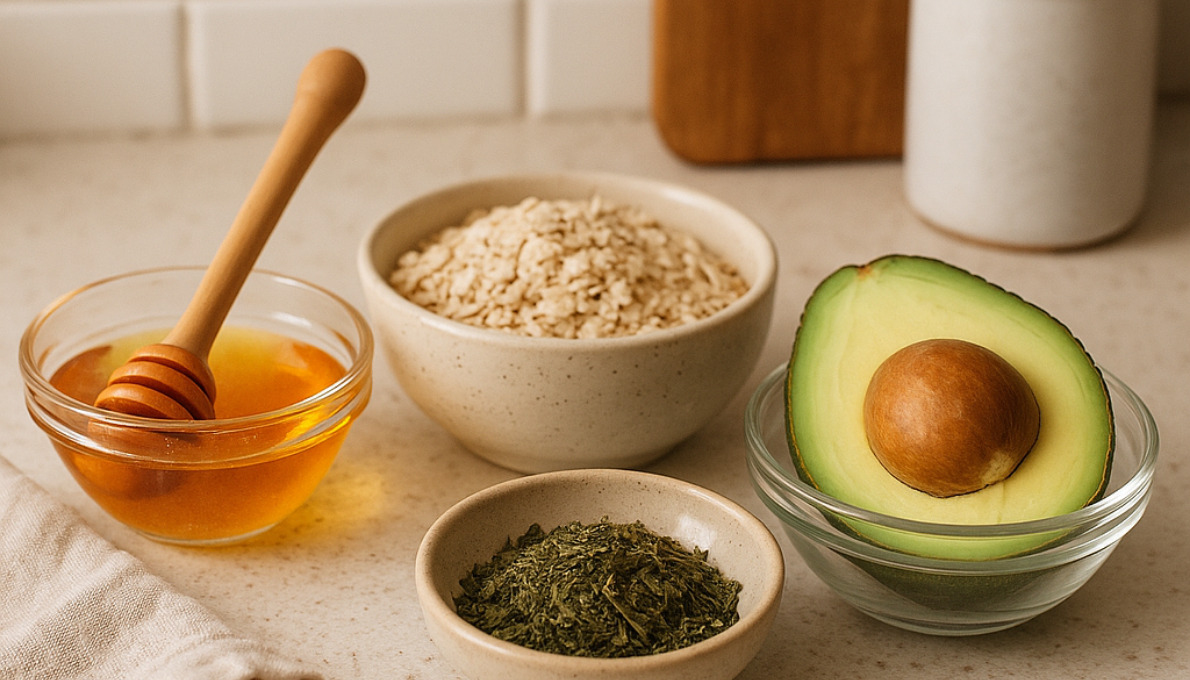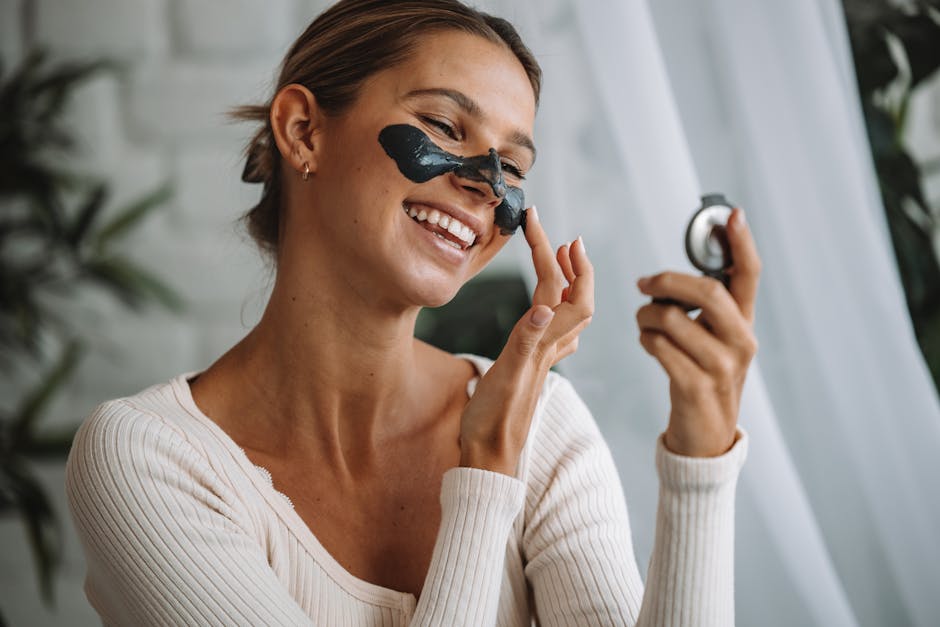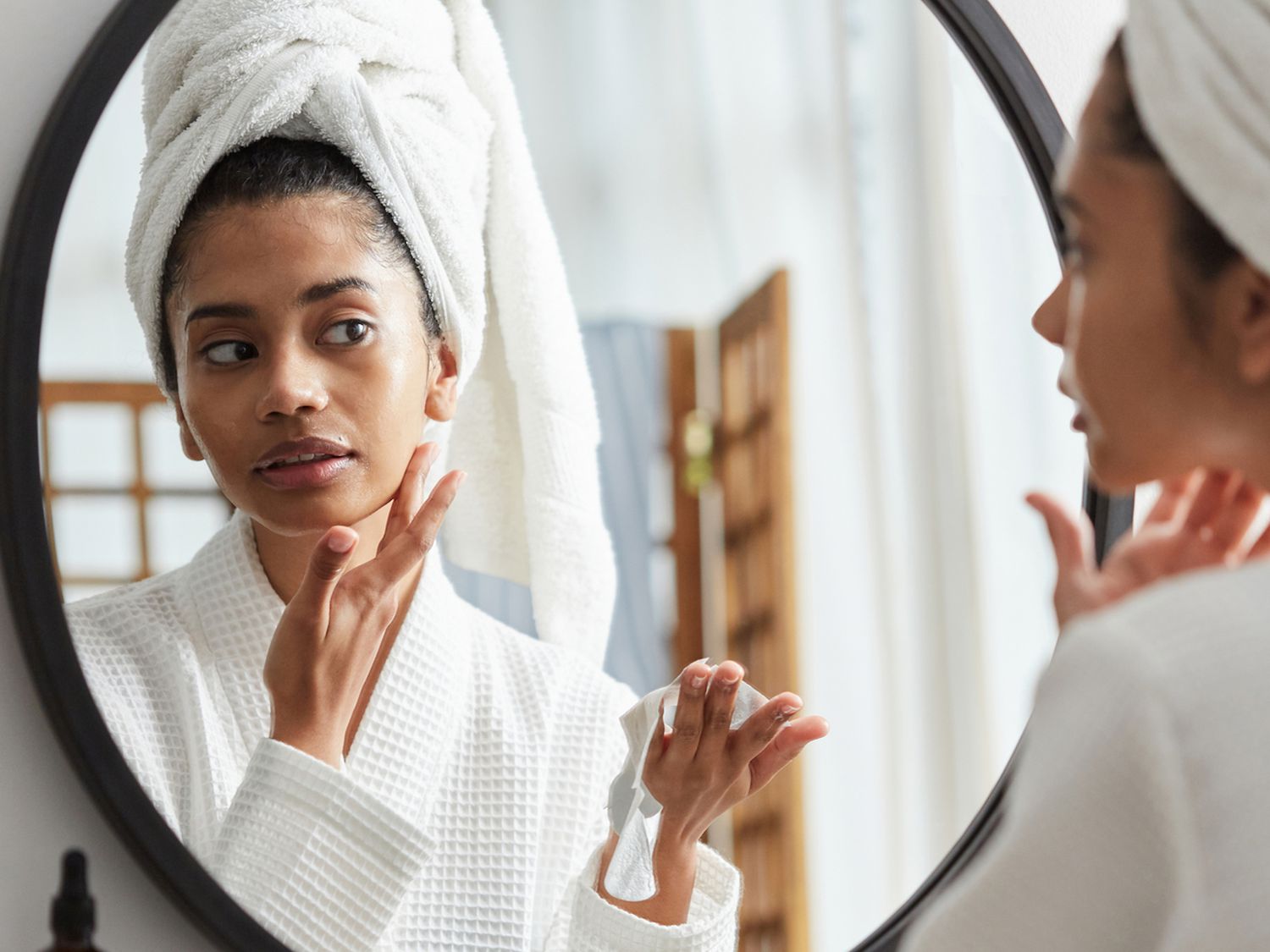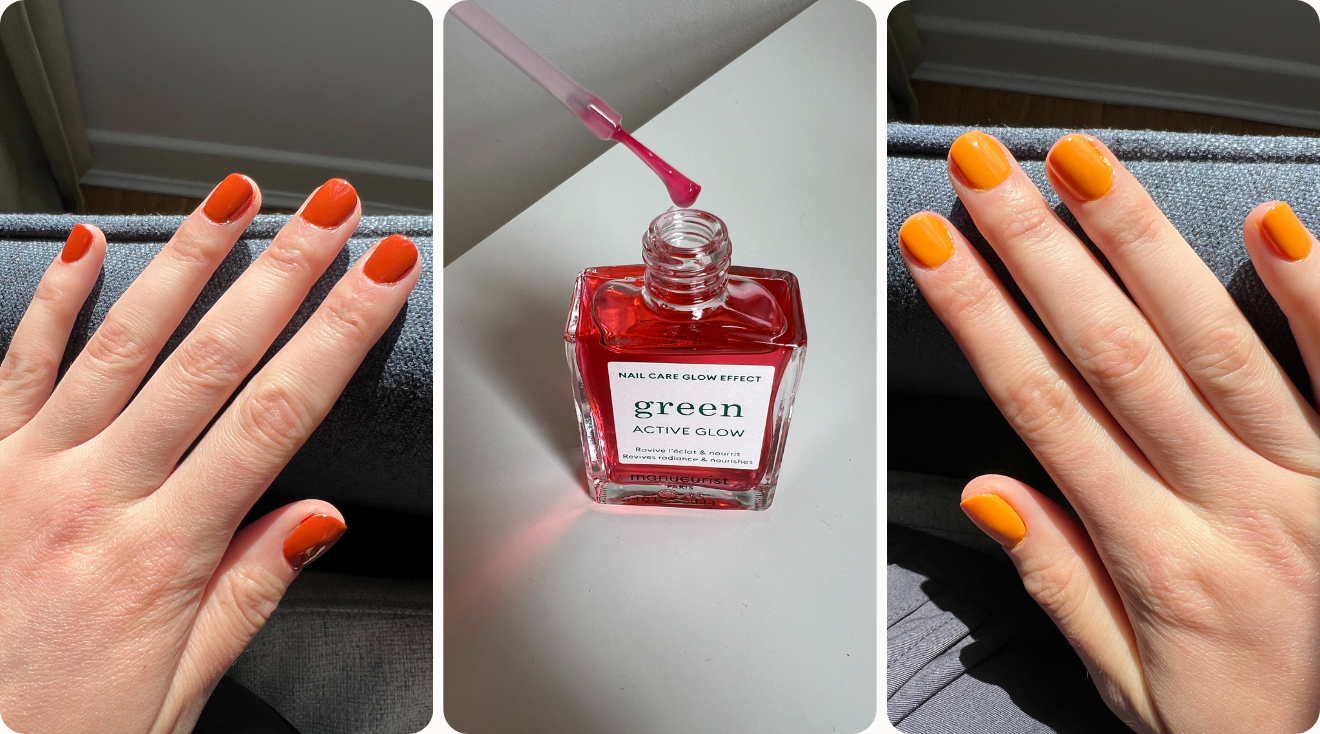Natural Beauty in Your Kitchen
DIY face masks are the perfect solution for anyone looking to improve their skincare routine using natural ingredients from their own kitchen. These homemade treatments offer the benefits of expensive spa products at a fraction of the cost.
Quick Answer: To make effective DIY face masks at home, you need:
- Base ingredients: Honey, yogurt, or avocado
- Active ingredients: Oatmeal (for exfoliation), turmeric (for brightening), green tea (for antioxidants)
- Application time: 10-20 minutes for most masks
- Frequency: 1-2 times per week depending on skin type
The beauty of DIY face masks lies in their simplicity and customization. Unlike store-bought options that contain preservatives and synthetic ingredients, homemade masks allow you to control exactly what goes onto your skin.
Studies show that many kitchen staples contain powerful skincare benefits. Honey offers natural antibacterial properties, avocado provides deep moisture with omega-3 fatty acids, and oatmeal gently exfoliates while soothing irritation.
As one holistic facialist noted in our research: “Manuka honey is a wound healer, a humectant, an anti-inflammatory, and antibacterial.” This single ingredient can address multiple skin concerns at once.
Making your own masks isn’t just good for your skin—it’s also an act of self-care. Taking 15 minutes to prepare and apply a mask gives you time to slow down and nurture yourself, all while minimizing waste from packaging and reducing your environmental footprint.

The Benefits of DIY Face Masks
Let’s talk about why making your own face masks isn’t just fun—it’s actually brilliant for your skin and wallet! When I started creating DIY face masks years ago, I was amazed at how something so simple could make such a difference.
Customization for Your Unique Skin
Your skin is as unique as your fingerprint, which is why those one-size-fits-all store masks often miss the mark. When you mix up ingredients in your own kitchen, you become the formulator who truly understands what your skin craves.
“Homemade beauty products can be made using just five ingredients or less, offering a cost-effective and simple alternative to high-priced commercial products,” according to research on natural skincare alternatives. Noticed your skin feeling parched in winter? Add more honey! Dealing with summer oiliness? Throw in some clay! This flexibility is something no commercial product can match.
Natural, Clean Ingredients
I don’t know about you, but reading ingredient labels on skincare products sometimes feels like deciphering a foreign language. With DIY face masks, that mystery disappears completely.
In our research, we found advice from dermatologist Dr. Mona Gohara that really resonates: “You probably wouldn’t take random pills before vetting how they could affect your body, so you should use that rule of thumb for your skin as well.” When you’re scooping avocado into your mask, you know exactly what you’re putting on your face—no suspicious “fragrance” or unpronounceable preservatives involved.
Significant Cost Savings
Let’s be real—beauty can be expensive! That fancy charcoal mask from Sephora might cost you $25 for a single-use packet. Meanwhile, that jar of raw honey in your pantry? It costs about $10 and can make dozens of DIY face masks, bringing each application down to pocket change.
I calculated this once and was shocked: my weekly commercial mask habit was costing over $300 annually, while my homemade versions came to less than $50 a year for the same frequency. That’s coffee money I’d much rather keep!
Environmentally Friendly
Each time you mix up a mask at home, you’re saying “no thanks” to another piece of single-use packaging. Those sheet masks and individually wrapped treatments create a mountain of waste over time. Your homemade avocado and honey mask? Zero waste if you compost the leftovers!
Fresh Application Every Time
There’s something special about applying ingredients at their peak potency. As Dr. Ife Rodney, a medical dermatologist, emphasizes: “Once you create a homemade mask, you need to use it immediately.” Unlike commercial products that might sit on shelves for months, your DIY face masks deliver fresh, active ingredients directly to your skin—like the difference between fresh-squeezed juice and the bottled stuff.
Therapeutic Ritual
Beyond just treating your skin, creating a mask becomes a moment of mindfulness in our chaotic days. There’s something deeply satisfying about measuring ingredients, mixing them with intention, and then taking 15 minutes to simply breathe while the mask works its magic. It’s skincare and self-care rolled into one soothing ritual.
Science backs up the benefits too. Research published in the National Center for Biotechnology Information confirms that many kitchen staples have legitimate skincare benefits. Honey isn’t just sweet—it’s antimicrobial and anti-inflammatory. Oatmeal contains compounds that genuinely calm irritation. Your kitchen really is a beauty lab!
The best part? You don’t need fancy equipment or a chemistry degree to get started. Just a few simple ingredients and the willingness to play a little. Your skin (and your wallet) will thank you.
Essential Ingredients for DIY Face Masks
The magic of DIY face masks begins in your kitchen pantry. These natural powerhouses can transform your skin without the hefty price tag of commercial products. Let’s explore the ingredients that deserve a special place in your homemade skincare arsenal:

Honey: Nature’s Humectant
There’s a reason honey has been used in skincare for thousands of years. This golden nectar isn’t just delicious—it’s a skincare superstar. Raw honey, especially Manuka, works as a natural humectant that literally draws moisture into your skin while fighting bacteria that might cause breakouts.
The natural enzymes in honey provide gentle exfoliation without any harsh scrubbing. I’ve found it particularly soothing on irritated winter skin. Plus, research confirms honey contains natural hydrogen peroxide, giving it those wonderful antibacterial properties that help calm angry blemishes.
Avocado: Deep Moisture for Dry Skin
That avocado toast isn’t just good for breakfast—save some for your face! Rich in healthy fats and vitamins, avocado delivers intense moisture to parched skin.
“Avocado is loaded with omega-3 fatty acids and B vitamins that help restore skin’s lipid layer,” notes a skincare expert in our research. These omega-3s strengthen your skin barrier, while vitamins A, D, and E support repair and renewal. What I love most about avocado is how it deeply hydrates without that heavy, pore-clogging feeling. It’s my go-to ingredient during harsh winter months when my skin needs extra TLC.
Oatmeal: Gentle Exfoliation and Soothing
That humble container of oats in your pantry might be your sensitive skin’s best friend. Colloidal oatmeal (simply finely ground oats) has been calming irritated skin for centuries.
The natural saponins in oatmeal provide gentle cleansing while its texture offers mild physical exfoliation. What makes oatmeal truly special is its ability to normalize skin pH and strengthen your skin barrier—perfect if you’re dealing with eczema, rosacea, or general irritation. I keep a small jar of finely ground oats in my bathroom specifically for those days when my skin feels reactive.
Green Tea: Antioxidant Powerhouse
Your morning cup of green tea can do wonders applied to your face. Rich in polyphenols that fight damaging free radicals, green tea is particularly helpful for those with oily or acne-prone skin.
The EGCG compounds in green tea reduce inflammation and help regulate sebum production. According to research published by the National Center for Biotechnology Information, these polyphenols offer significant anti-inflammatory and anti-bacterial effects. I love using cooled green tea as a base for masks when my skin looks red or irritated—the results are often visible within minutes.
Yogurt: Gentle Exfoliation and Probiotics
Plain, unsweetened yogurt brings a host of benefits to your homemade masks. Its creamy texture makes it easy to apply, while its natural lactic acid (an alpha-hydroxy acid) gently dissolves dead skin cells without scrubbing.
The live cultures in yogurt may also help balance your skin’s microbiome. I’ve found yogurt particularly effective for creating masks with a smooth, easy-to-apply consistency that rinses away cleanly. If you have sensitive skin that needs exfoliation without irritation, yogurt should be your go-to ingredient.
Turmeric: Brightening and Anti-inflammatory
This vibrant yellow spice does more than flavor your curry. Turmeric contains curcumin, a compound with powerful anti-inflammatory properties that can help brighten skin and fade dark spots over time.
Many of my friends with acne scarring swear by turmeric masks for reducing discoloration. Just a friendly warning from personal experience: use turmeric sparingly if you have fair skin, as it can temporarily stain your face yellow! A small pinch is all you need to reap the benefits without looking like you’ve applied self-tanner incorrectly.
Aloe Vera: Cooling and Healing
There’s nothing quite like the immediate relief aloe vera brings to irritated skin. Beyond sunburn relief, aloe vera makes an excellent addition to DIY face masks for its cooling, calming properties.
The gel contains compounds that promote healing while providing lightweight hydration suitable for all skin types. Fresh aloe straight from the plant offers the purest form, but a good quality pure aloe vera gel (without alcohol or artificial fragrances) works wonderfully too. I keep an aloe plant on my windowsill for skincare emergencies—it’s like having a mini spa treatment growing right in your home.
Each of these natural ingredients offers unique benefits for different skin concerns. The beauty of creating DIY face masks is that you can mix and match based on what your skin needs today, not what a commercial product developer decided months ago. Your skin is unique—shouldn’t your skincare be too?
Top 5 Easy DIY Face Masks for Glowing Skin
Ready to transform your skin with ingredients from your kitchen? Let’s explore five simple yet effective DIY face masks that target different skin concerns. These recipes take just minutes to whip up and deliver spa-worthy results without the hefty price tag.
Honey and Avocado Hydrating DIY Face Mask
Is your skin feeling parched and tight? This moisture-packed mask is like a tall drink of water for thirsty skin. The combination of honey’s natural humectant properties with avocado’s nourishing fatty acids creates the ultimate hydration duo.
Ingredients:
- ½ very ripe avocado
- 2 tablespoons organic honey
- ½ teaspoon coconut oil (optional, for extra dry skin)
To make this skin-quenching treatment, mash the avocado until completely smooth—those lumps might seem minor, but they can make application a bit of a mess! Stir in the honey and coconut oil (if your skin is especially dry), then mix until you have a creamy, uniform consistency.
Apply a generous layer to clean, dry skin and let it work its magic for 15-20 minutes. During this time, the avocado’s omega-3 fatty acids begin repairing your skin’s natural barrier while honey draws moisture into your skin. Rinse with lukewarm water, pat dry, and follow with your regular moisturizer.
“Avocado is loaded with omega-3 fatty acids and B vitamins that help restore skin’s lipid layer,” explains beauty editor Holly Rhue after testing this mask. Her glowing review? “That glowy sheen on my cheekbones? It’s not highlighter…it’s my SKIN.”
This mask is your best friend after air travel, during harsh winter months, or anytime your skin feels tight and uncomfortable. For best results, treat yourself once a week.
Green Tea and Aloe Vera Soothing DIY Face Mask
When your skin is feeling irritated, red, or producing too much oil, this calming mask comes to the rescue. It combines the anti-inflammatory power of green tea with aloe vera’s legendary soothing properties.
First, brew a strong cup of green tea and let it cool completely. Then mix 2 tablespoons of the cooled tea with 1 tablespoon honey, 2 teaspoons clay (bentonite or kaolin work wonderfully), and 1 tablespoon aloe vera gel. Stir until you have a smooth paste, adding a bit more clay if the mixture seems too runny.
Apply to clean skin (avoiding the delicate eye area) and relax for 15-20 minutes while the mask works its magic. Rinse with cool water and follow with a lightweight moisturizer.
The science behind this mask is solid. Research on green tea’s skin benefits confirms its polyphenols deliver significant anti-inflammatory and antioxidant effects. When paired with aloe vera’s cooling properties, this dynamic duo calms irritated skin while helping to balance oil production.
This mask is particularly beneficial after sun exposure or during seasonal changes when your skin might be acting up. Your skin will thank you with a calmer, more balanced appearance.
Oatmeal and Yogurt Exfoliating DIY Face Mask
Looking for gentle exfoliation that won’t irritate sensitive skin? This mask offers the best of both worlds: physical exfoliation from finely ground oats and chemical exfoliation from yogurt’s natural lactic acid.
Start by grinding ¼ cup of rolled oats in a food processor or coffee grinder until they become a fine powder. Mix this colloidal oatmeal with 2 tablespoons plain Greek yogurt, 1 teaspoon honey, and a few drops of jojoba oil if you’d like extra nourishment.
The application technique matters with this mask. Apply to slightly damp skin using gentle circular motions, which provides light exfoliation. Leave it on for 10-15 minutes, then rinse with warm water, continuing those gentle circles as you wash it away. Pat dry and apply your favorite moisturizer.
What makes this mask special is its gentleness. Studies show colloidal oatmeal improves skin barrier function while soothing inflammation. The yogurt’s lactic acid dissolves dead skin cells without harsh scrubbing. The result? Smoother, brighter skin without the irritation that can come from commercial exfoliators.
This mask is perfect for sensitive skin types who still need that exfoliation glow. Use it weekly for best results, and watch as your skin becomes increasingly smooth and radiant.

Turmeric and Honey Brightening DIY Face Mask
Struggling with dark spots, uneven tone, or just a generally dull complexion? This brightening mask combines turmeric’s illuminating properties with honey’s healing benefits for a complexion pick-me-up.
In a small bowl, mix ½ teaspoon turmeric powder, 1 tablespoon honey, 1 teaspoon plain yogurt, and ¼ teaspoon lemon juice (optional, and best skipped if you have sensitive skin). The consistency should be thick enough to stay put on your face—if it seems too thin, add a bit more yogurt.
Apply a thin layer to clean skin, being careful around your eyes. Leave it on for just 10-15 minutes—no longer, as turmeric can temporarily stain the skin. Rinse thoroughly with warm water, and follow with toner and moisturizer.
“They are both fantastic ingredients for lightening dark marks,” notes a dermatologist about the turmeric-honey combination. The science explains why: turmeric contains curcumin, which helps inhibit melanin production (the pigment responsible for dark spots), while honey accelerates healing of damaged skin.
A friendly word of caution: turmeric can temporarily stain fair skin with a slight yellow tint. Always do a patch test first, and consider reducing the amount of turmeric if you’re concerned. Don’t worry—any staining typically fades within a few hours and is well worth the brightening benefits.
Banana and Honey Anti-Aging DIY Face Mask
This nourishing mask is a treat for mature skin or anyone concerned about fine lines and dullness. Vitamin-rich banana combines with honey’s hydrating properties to create a natural age-defying treatment.
To prepare, mash half a ripe banana until completely smooth—using a blender helps avoid those pesky lumps that can make application uneven. Add 1 tablespoon honey, ½ teaspoon olive oil or argan oil, and a few drops of vitamin E oil if you have it on hand. Mix until well combined.
Apply an even layer to clean skin and relax for 15-20 minutes while the mask works its rejuvenating magic. Rinse with lukewarm water, then follow with your favorite serum and moisturizer.
The anti-aging power of this mask comes from banana’s rich vitamin content—it’s packed with vitamins A, B, and E, which help fight free radical damage and support healthy cell turnover. The potassium in bananas hydrates and plumps skin, while the added honey and oils provide additional nourishment that mature or dry skin craves.
Beauty editor Kristina Rodulfo, initially skeptical about DIY beauty treatments, was impressed after trying a similar mask: “I must confess, I’m not a big fan of DIY beauty… but I couldn’t believe how baby soft my skin felt.”
Make this mask part of your weekly self-care routine for best results. Your skin will gradually appear more radiant and feel noticeably softer with regular use.
Frequently Asked Questions about DIY Face Masks
I’ve noticed some common questions popping up about DIY face masks as I’ve shared these recipes with our Beyond Beauty Lab community. Let’s tackle these together so you can mask with confidence!
Are DIY face masks effective?
Yes, homemade masks can absolutely deliver results—but let’s keep our expectations realistic.
Natural ingredients like honey, oatmeal, and green tea have genuine benefits backed by research. They can hydrate, soothe inflammation, and gently exfoliate your skin. However, they typically work more subtly than concentrated active ingredients found in professional treatments.
As one beauty editor who tried our honey mask put it: “I couldn’t believe how baby soft my skin felt afterward!” That said, another tester found an oatmeal mask “too difficult to remove and caused skin irritation,” highlighting how personal these experiences can be.
Your results will depend on several factors: the quality of ingredients you use, your unique skin type, how consistently you use the masks, and what you’re hoping to achieve. Think of DIY face masks as gentle support for your skin rather than dramatic transformers.
If you’re looking for more significant results while still keeping things natural, you might want to explore our Natural Anti-Aging resources that combine DIY approaches with evidence-based ingredients.
How often should I use a DIY face mask?
This is where listening to your skin becomes so important! As a general guide:
If you have dry skin, those nourishing avocado and honey masks can usually be enjoyed 1-2 times weekly. For oily or acne-prone skin, stick to once a week with clay or green tea masks to avoid over-drying. If your skin is sensitive, gentle oatmeal or aloe masks can work 1-2 times weekly, but pay close attention to how your skin responds.
As dermatologist Dr. Rodney wisely notes: “Listen to your skin. If it feels tight or irritated after a mask, you’re either using it too frequently or the ingredients aren’t right for your skin type.”
I always recommend starting with less frequent application and gradually increasing if your skin seems to be loving the treatment. Even good things can be overdone when it comes to skincare!
What precautions should I take when using DIY face masks?
Natural doesn’t automatically mean risk-free. Here’s how to mask safely:
Always do a patch test before applying any DIY mask to your face. This simple advice from Dr. Gohara has saved countless faces from unexpected reactions! Just apply a small amount behind your ear or on your inner wrist and wait 24 hours to check for any redness or irritation.
Be cautious with certain popular DIY ingredients that often cause problems. Lemon juice can make your skin more sensitive to sunlight, cinnamon might cause burning sensations, baking soda disrupts your skin’s natural pH balance, raw eggs carry bacterial risks, and undiluted essential oils can be surprisingly harsh.
If you have food allergies, topical application can sometimes trigger reactions too. And always use fresh, clean ingredients—these masks don’t have preservatives, so make them fresh each time.
When removing your mask, be gentle! If it has hardened, like clay masks often do, soften it first with warm water before wiping away. Follow with your usual moisturizer to lock in all the goodness.
How should I store leftover DIY face mask mixture?
Ideally, you’ll make just enough for one application. Without preservatives, homemade masks can become a breeding ground for bacteria surprisingly quickly.
If you do find yourself with leftovers, store them in an airtight container in your refrigerator and use within 24-48 hours at most. Discard immediately if you notice any change in smell, color, or texture—your skin deserves better than questionable mask mixtures! And please don’t share your mask with others, as this can spread bacteria.
As one dermatologist I spoke with pointed out, “Freshness ensures maximum potency of the active ingredients, unlike preserved commercial products that may sit on shelves for months before use.” Think of your DIY face masks like fresh food—best enjoyed promptly!
Can I use DIY face masks if I have acne or sensitive skin?
Absolutely, but ingredient selection becomes even more crucial.
For acne-prone skin, focus on ingredients with natural antibacterial and anti-inflammatory properties: Manuka honey works wonders, green tea calms inflammation, turmeric fights redness, and yogurt offers gentle exfoliation with its natural lactic acid. Just be sure to avoid comedogenic ingredients like coconut oil or cocoa butter that might clog your pores further.
If your skin is sensitive, gentle is the name of the game. Colloidal oatmeal, aloe vera, plain yogurt, and honey are your best friends. Start with shorter application times—just 5-10 minutes—when trying a new mask recipe to see how your skin responds.

DIY face masks should feel good both during and after application. Any burning, stinging, or excessive redness means that particular recipe isn’t right for you. The beauty of making your own masks is that you can always adjust and experiment until you find your perfect formula!
Conclusion
Embracing DIY face masks is more than just a trend—it’s a return to time-tested natural skincare that puts you in control of what goes on your skin. Throughout this journey, we’ve finded how the humble ingredients sitting in your kitchen can transform into powerful allies for your beauty routine.
What makes these homemade treatments truly special is their incredible versatility. Dealing with winter dryness? The avocado and honey mask has you covered. Battling summer oiliness? Green tea and aloe vera come to the rescue. This ability to customize ingredients based on your skin’s ever-changing needs is perhaps the greatest gift of DIY skincare.
I’m always amazed by how multi-talented natural ingredients can be. As one holistic facialist notes about one of our favorite ingredients: “Manuka honey is a wound healer, a humectant, an anti-inflammatory, and antibacterial.” This multi-benefit approach is what makes natural ingredients so special—they often work on several levels simultaneously to improve your skin’s health.
I encourage you to start small—pick just one of the five recipes we’ve shared and notice how your skin responds. Many of our readers keep a simple skincare journal noting which ingredients seem to work best for their unique skin. This mindful approach connects you more deeply with your body’s needs and responses, creating a more intuitive relationship with your skin.
Consistency brings the real magic. While a single mask will leave your skin feeling softer and looking more radiant, the true benefits come from regular, thoughtful care. Try incorporating your favorite mask into a weekly self-care ritual—perhaps on Sunday evenings as you prepare for the week ahead, giving yourself that moment of calm before Monday arrives.
At Beyond Beauty Lab, we believe beauty routines should feel like moments of joy rather than complicated chores. The process of creating and applying a DIY face mask offers a meditative pause in our busy lives—a chance to slow down, breathe deeply, and reconnect with ourselves.
I’d love to hear about your experiences with these recipes! Have you tried the turmeric brightening mask? Did the banana anti-aging formula work wonders for you? Share your results or your own favorite combinations with our community. And if you’re interested in exploring more natural beauty approaches, check out our additional DIY beauty recipes for inspiration.
Here’s to glowing skin, naturally!









